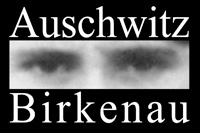




Plunder
In the early days at Auschwitz, as in other Nazi German concentration camps, prisoner property was placed on deposit to be returned upon potential release or, in case of death, mailed to next of kin. From January 1943, all personal items left behind by Jews, Poles, and Soviet citizens incarcerated in concentration camps began to be confiscated; a year later, confiscation was broadened to include the personal property of Roma.
The clothing obtained in this way was generally recycled in the textile and garment industries, while currency and valuables were sent to the Reichsbank. The high point of the plundering occurred during the mass deportation of Jews to Auschwitz for extermination. The hair was cut from the corpses of the people who were gassed, and jewelry torn off, and all gold dental work extracted (dental gold). Victims' luggage was taken to the Kanada warehouses. Worn‑out clothing and shoes were either used by the prisoners or sent to industrial plants as raw material. Medicine was sent mainly to the SS hospitals. Foodstuffs, depending on their quality, were sent to the SS or prisoner kitchens. Clothing and shoes in good condition together with everyday essentials were turned over to German civilians.
